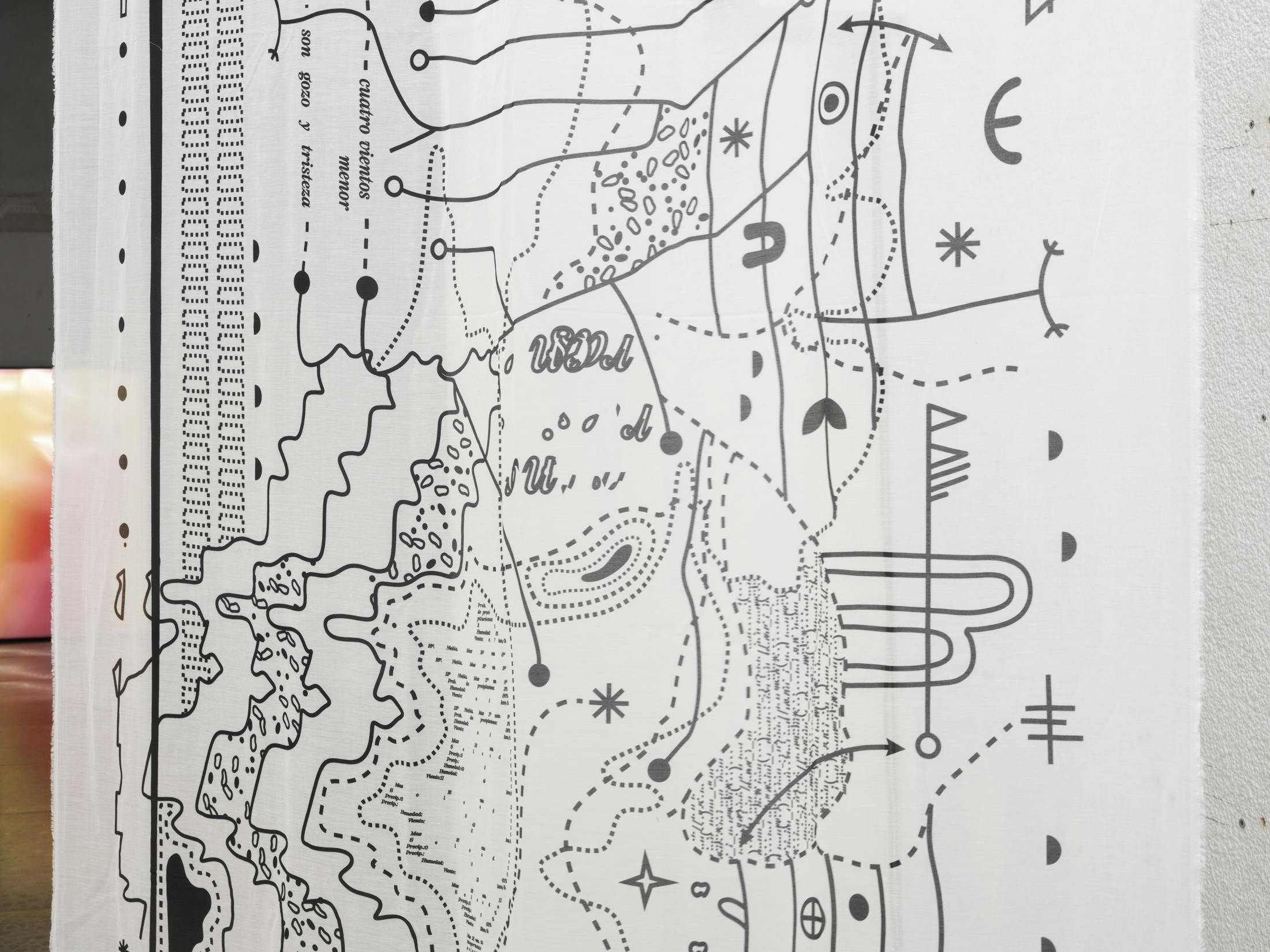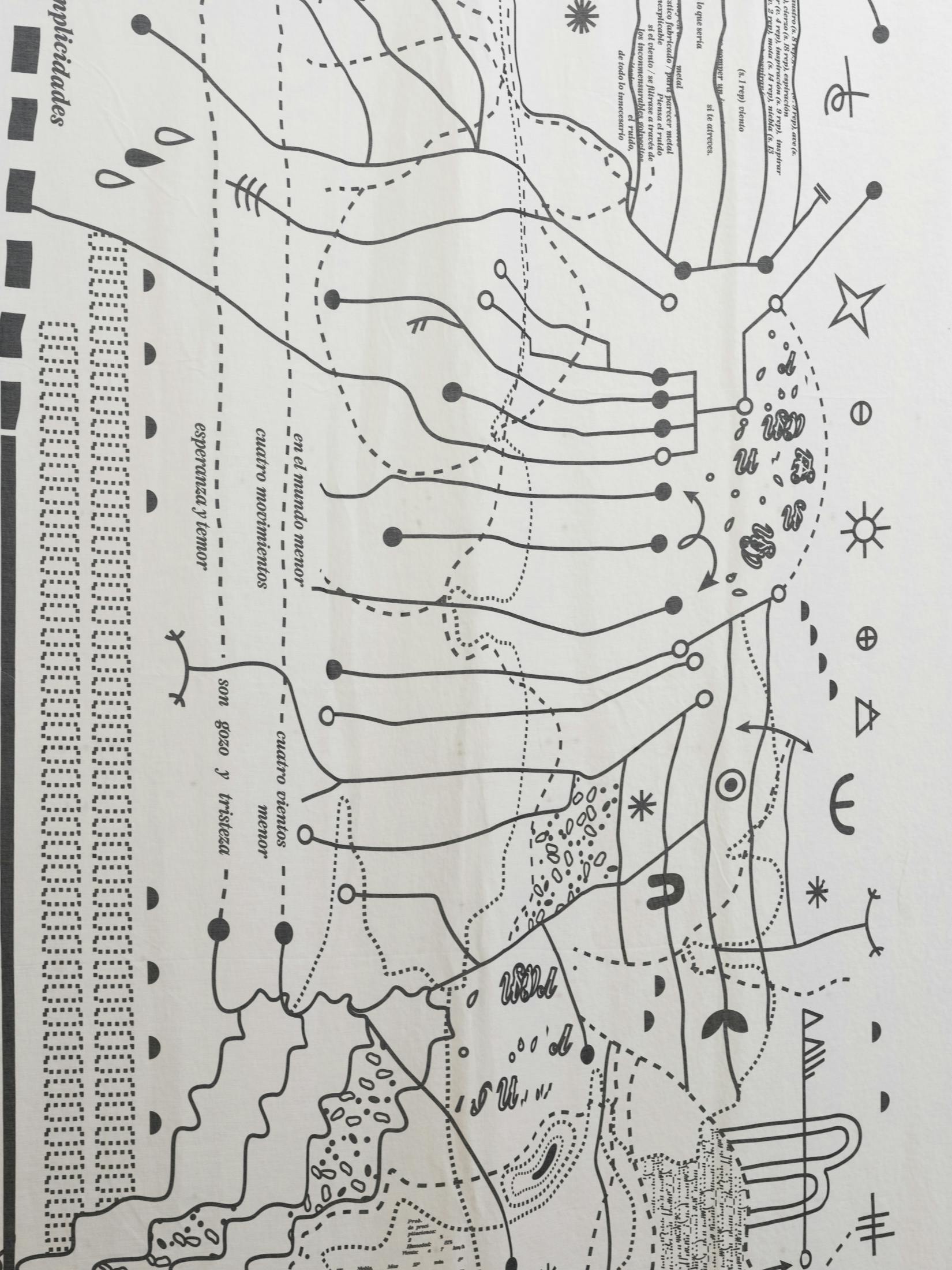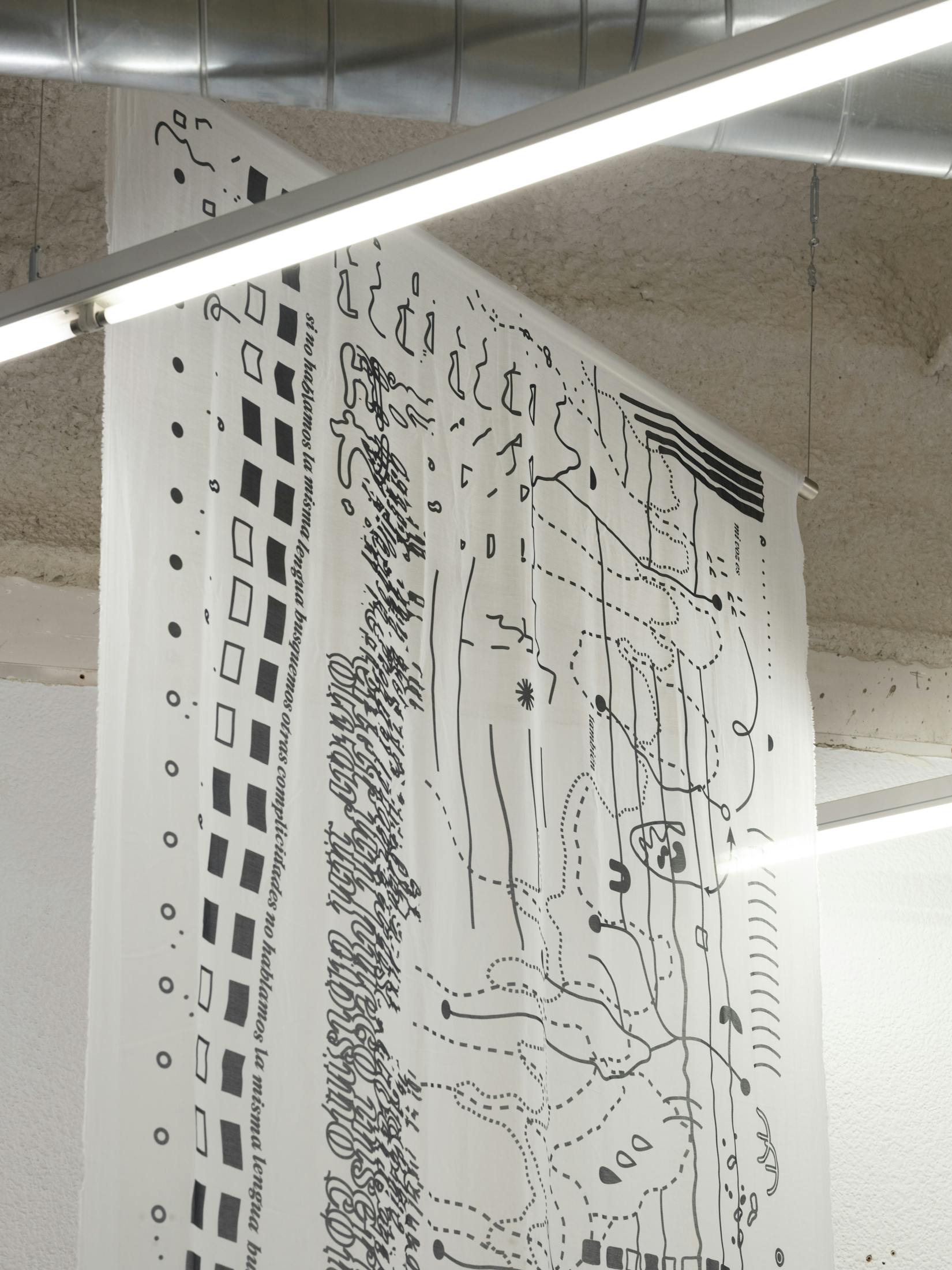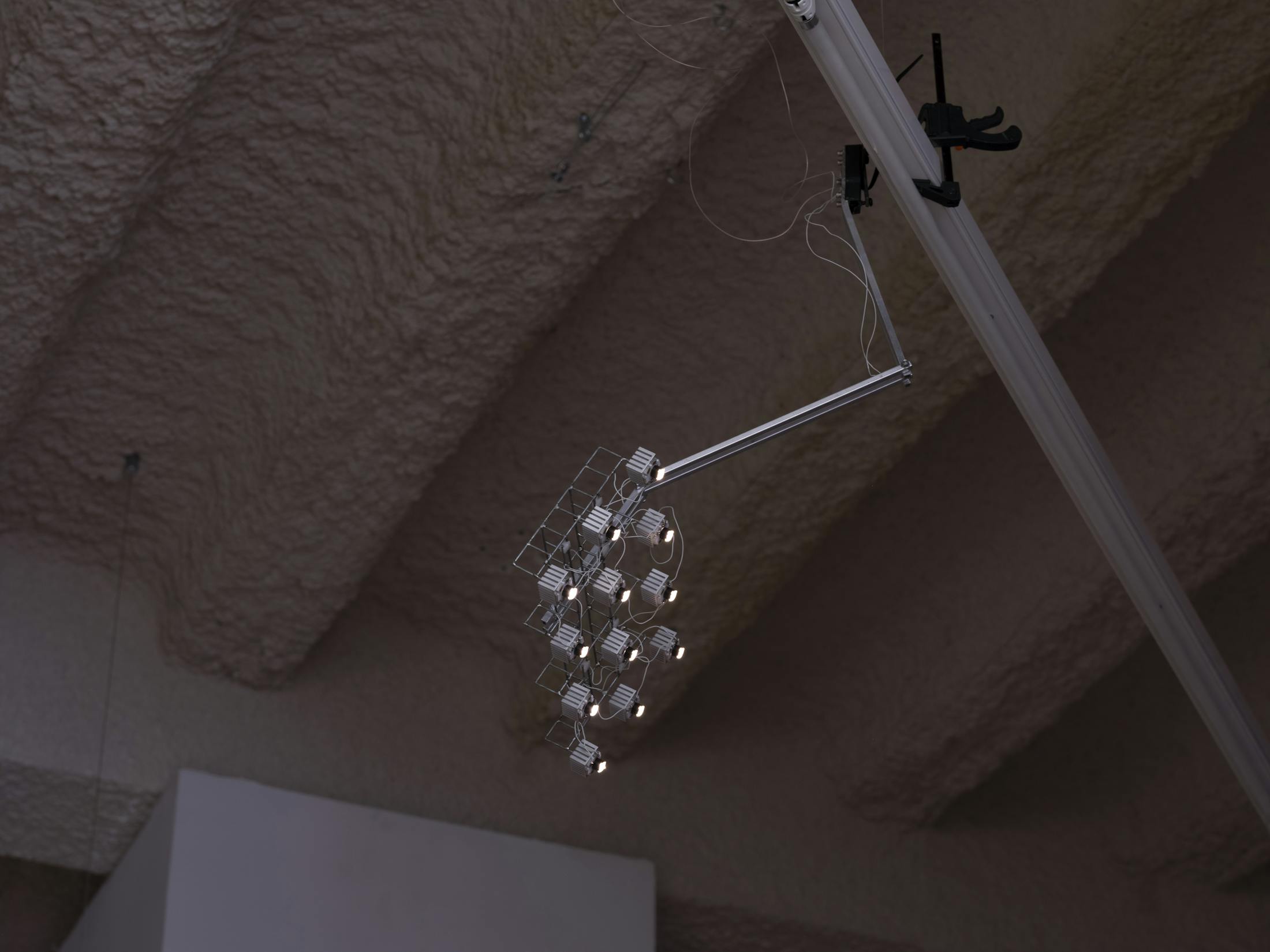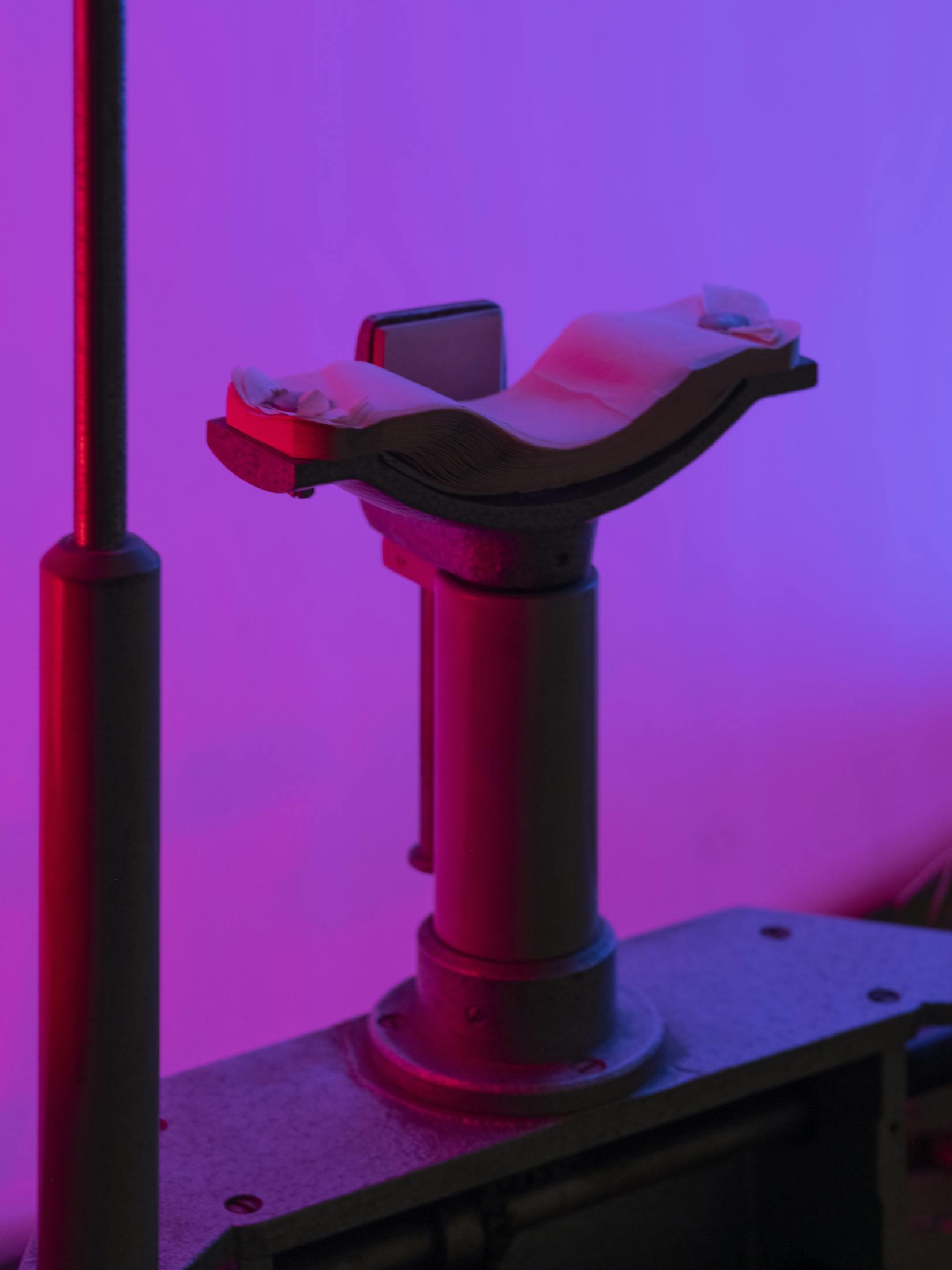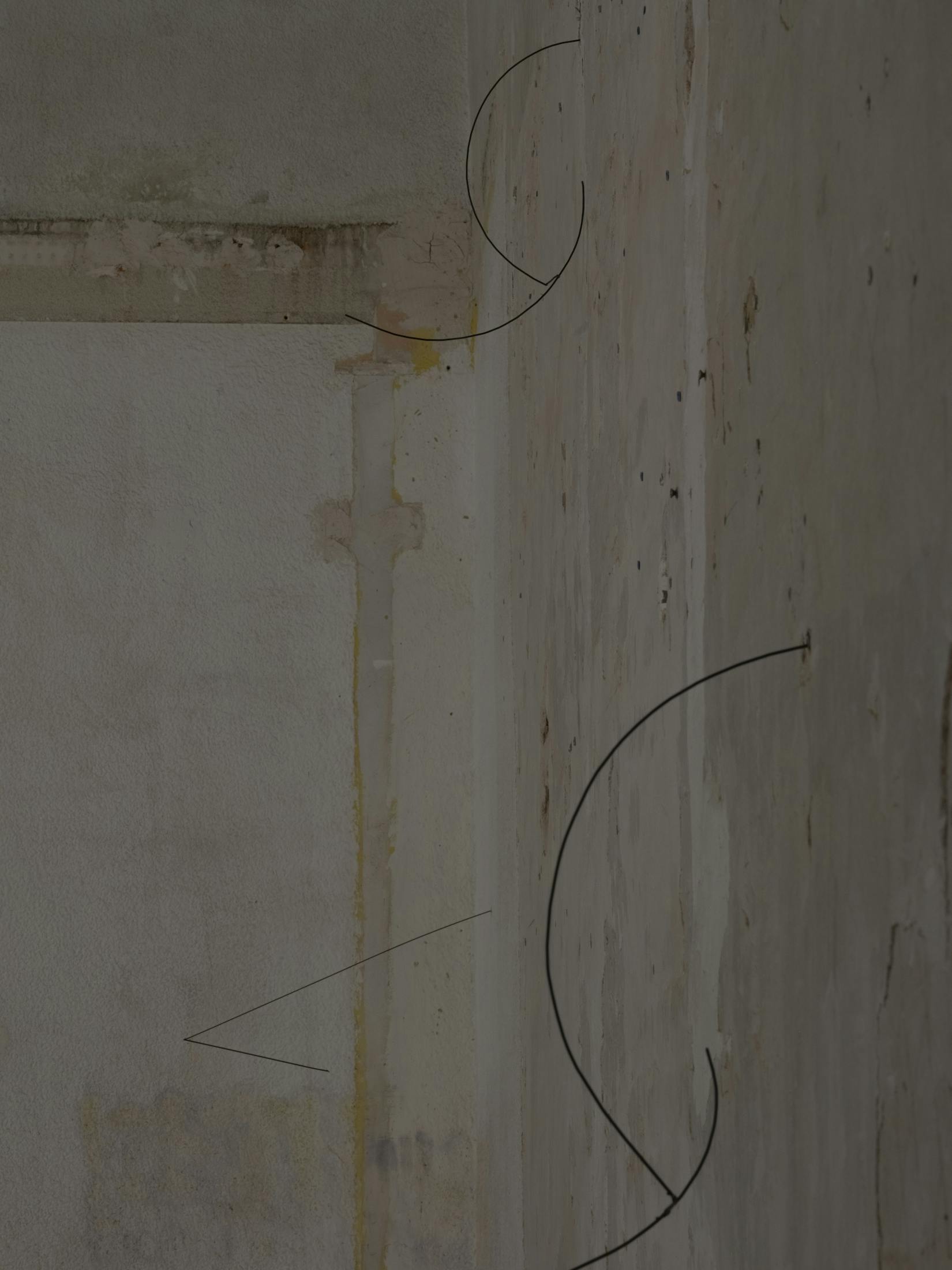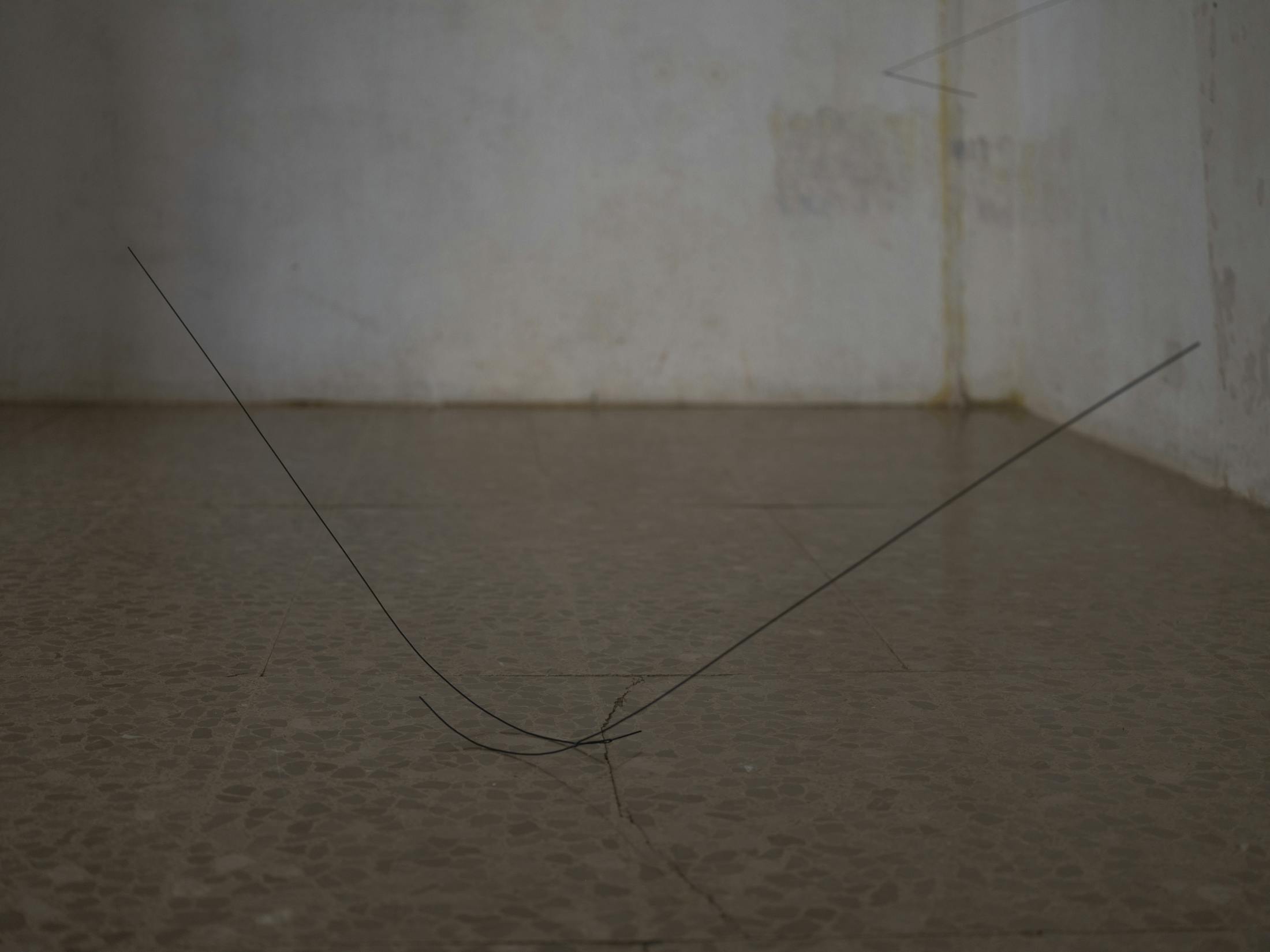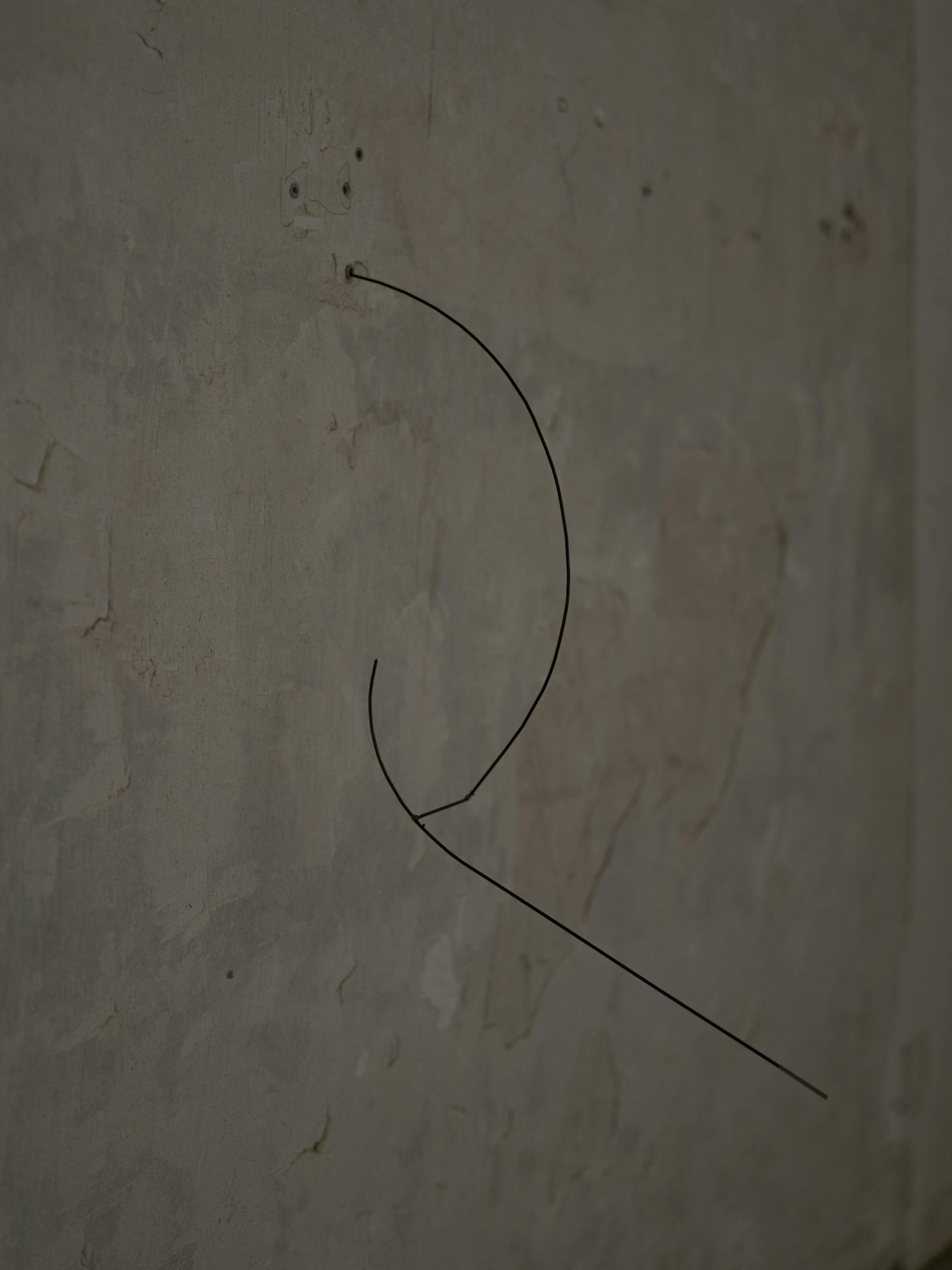“Mechamystics: Invisible mechanics in which we are immersed in trembling.” Granada visionary filmmaker José Val del Omar (1904 - 1982) coined this term in one of his collages, dated between 1977 and 1982, alongside other brief text fragments and the image of sound waves.
Mechamystics, coined by Val del Omar, is a fundamental concept in his work. In his writings, we find it in two variants, as indicated by Javier Ortiz-Echagüe. The first one appears in the text “The Pedagogical Missions and Cinema” (1943), where Val del Omar writes: "I understand life (…) as not only an intentional mystical attitude but something more embodied, life as a meta-mystical action, an action that descends from ecstasy to build glory with the heart and hands"1. On the other hand, quoted as mechamystic, Val del Omar opens up this relationship between mechanics and the invisible suggested by the text of the collage. The filmmaker exposed it thus at a congress on film technique in Turin in 1961: "We must detect and control this spectacle that makes us see without looking, hear without listening, and keep pace without realizing it. We must ride on the machines, and this can only be achieved from a mecha-mystical mental position. From an awareness of the invisible mechanics that surrounds us"2. This mechamystics, invisible mechanics, embraces us and surrounds us; we are submerged in it, in a relationship between the body and the machine, in the pulsation of a robotic heart.
Mechamystics is an exhibition that invites a series of artists to immerse themselves in these ideas and reinterpret them through practices that include installation, experimental film, sound art, video, or sculpture, to think about technique through a vision that seeks to see beyond the immediate. In this exhibition, mechamystics is taken in the plural, as singular practices and approaches to these issues by Raquel G. Ibáñez, Gloria López Cleries, Max Milà Serra, Marc O’Callaghan, Milena Rossignoli, and Jorge Suárez-Quiñones Rivas.








